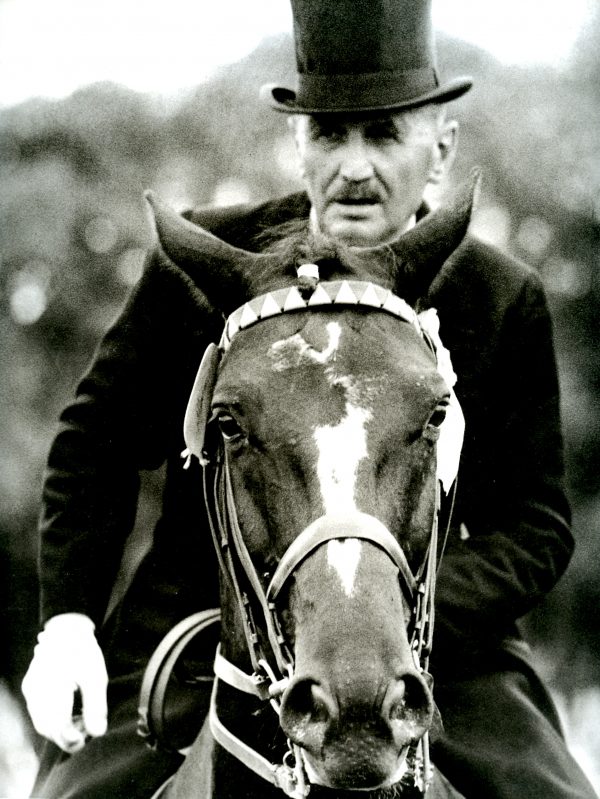
The trainer who influenced so many Twentieth Century Trainers:
Otto Lörke
What do these great dressage rider trainers have in common: Willi Schultheis, Bubi Günther, Herbert Rehbein, Herbert Kuckluck, Bimbo Peilicke and Rudolf Zeilinger? Answer, they were all trained by Otto Lörke or with one of his pupils…
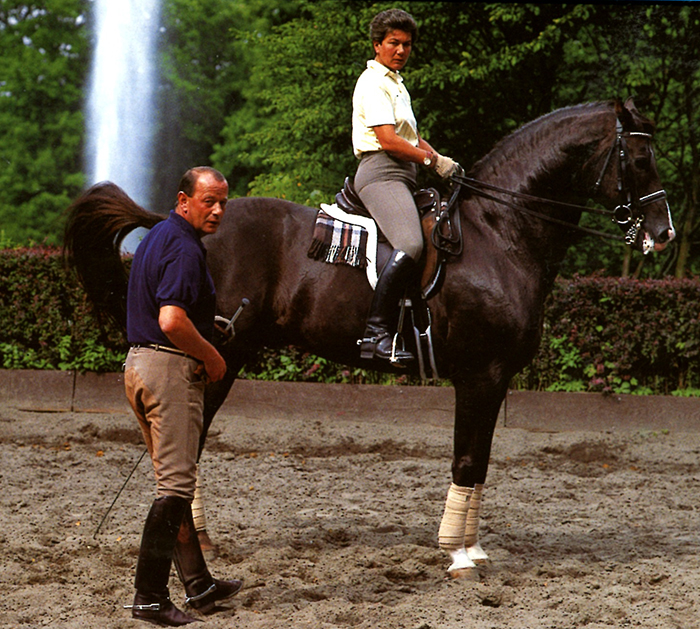
Herbert Rehbein with his wife, Karin and the great Donnerhall – he carried on the teaching of Otto Lorke to another generation of riders and trainers
Otto Lörke was born in 1879, and died in 1957. Colonel R. A. Abé penned this tribute for the 1959 edition of L’Annee Hippique.
Richard Abé was born 1898 and in the 1920s and 30s, he was a successful rider in various disciplines. After the Second World War he was the long time chief editor of the German Horse Sport and Breeding Magazine St Georg and one of the most important dressage judges of Germany. One of his successors, Jan Tönjes, told me that Abé published his judge’s notes from the Aachen score sheets in St GEORG while he was editor-in-chief. Neckermann put pressure on the FN to enter in the rules that a ‘journalist from St GEORG’ (sic!) wouldn’t be allowed to become an international dressage judge.
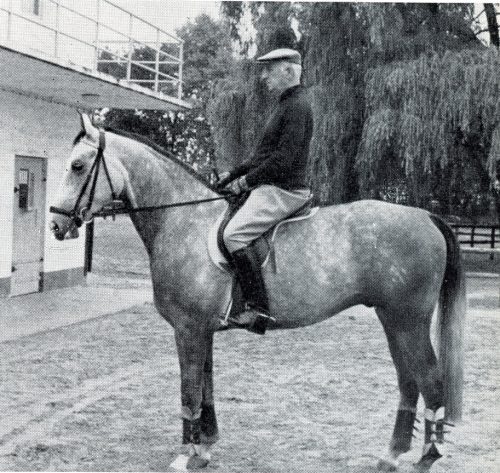
Abé didn’t just judge and write, here he is riding a four-year-old at Aachen
Here is Abé’s tribute to Lörke:
Otto Lörke’s death meant a great loss to horsemen almost everywhere. In the fifty years of his riding activities, he not only won countless competitions in the saddle but the number of well known Dressage winners he produced has surpassed anything we have seen in our time. Furthermore, he not only trained those horses, but also ‘made’ the riders who won with them. The work of his life really is a chapter in the history of the classic art of equitation.
Lörke, as Gustav Rau has put it, was a born genius, and as such was able to do away with the rules and limits that have to be observed by the average horseman. He had learnt, it is true, the military system of riding when he was serving his time with a Ulan Regiment of the Royal Prussian Guards. However, his great successes later on were mainly due to his own way of riding and training. During Lörke’s service in the army, his ability was soon discovered by his superiors, and he worked together with the then Colonel Baron Holzing-Berstett – who later became President of the FEI – and Count Lubert Westphalen. Lörke afterwards was transferred to the Royal Stables in Berlin where he was appointed the Kaiser’s ‘Leibund Sattlmeister’. His ability to produce supple and obedient horses that could be ridden by anybody was soon recognized.
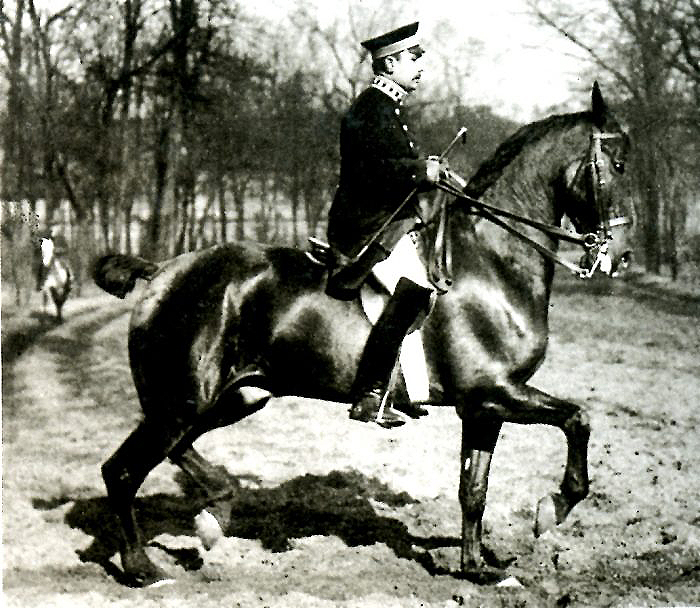
Otto Lörke in 1909 – riding in the Berlin Tiergarten
Therefore he was given the task of preparing the Kaiser’s horses, which had to be particularly well-trained as the Kaiser was hampered by a shortness and weakness of his right arm.
After the 1918 revolution Lörke, went to the Preten-Stud for a short time before establishing his own stables in Berlin. Those years mark the growing popularity of showing and showjumping, he made his name as a specialist in dressage with Alberich, Diamant, later Pommerländer, Stracchhur, Dorffrieden, Fanal, to mention only a few. They all distinguished themselves by great impulsion and action; Lörke did not like ‘bores’ be it horses or men.
In the late twenties Lörke had so many well trained hoses in his stables that he was able to mount eight former Generals, who performed the famous Quadrille at the big Berlin Indoor Horse Show, that was watched by the President of the Reich, Field-Marshall von Hindenburg.
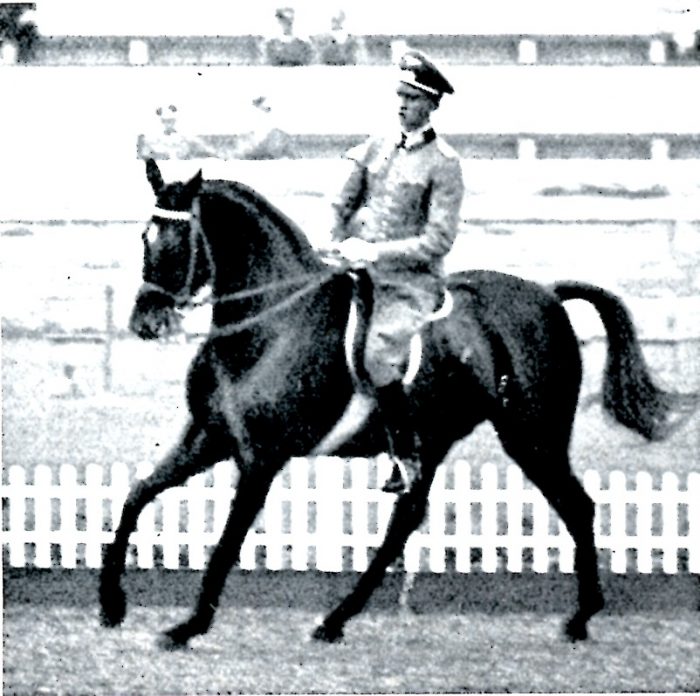
Lt. Pollay and Kronos – gold medal winners
Some years before the Olympic Games of 1936 he was asked to go to Hanover Cavalry School to train horses and riders for the Grand Prix de Dressage. The result is known. The German team consisting of Major Gerhard – Absinth, Captain von Oppeln-Bronikowski – Gimpel and 1st Lt. Pollay – Kronos won the Gold Medal, the last named combination also winning the Gold Medal for the best individual performance. The commandant of the famous Saumur Cadre-Noir, Commandant Lesage, afterwards rode Kronos in Berlin. He said, never in his life had he been on a better-trained horse.
During the trying times immediately after the second world war, Lörke and his horses found a new home at Vornholz through the kindness of Clemens von Nagel-Doornick, who not only tried to collect what was left of outstanding German riders, but also made contacts again with horsemen from foreign countries. Here, Lörke produced a new string of great dressage horses Chronist, Lodi, Pernod, Afrika and Cyrenaika that were later joined by Adular and Malteser. We are glad to remember the pleasant demonstrations he gave together with his able pupils, Baroness Ida von Nagel, W. Schultheis and W. Schönwald at numerous shows. There is nobody who knew better than Lörke how to keep dressage horses at the peak of their form, and fresh, up to their old age, the huge East-Prussian Fanal, now 23 years old, being an example.
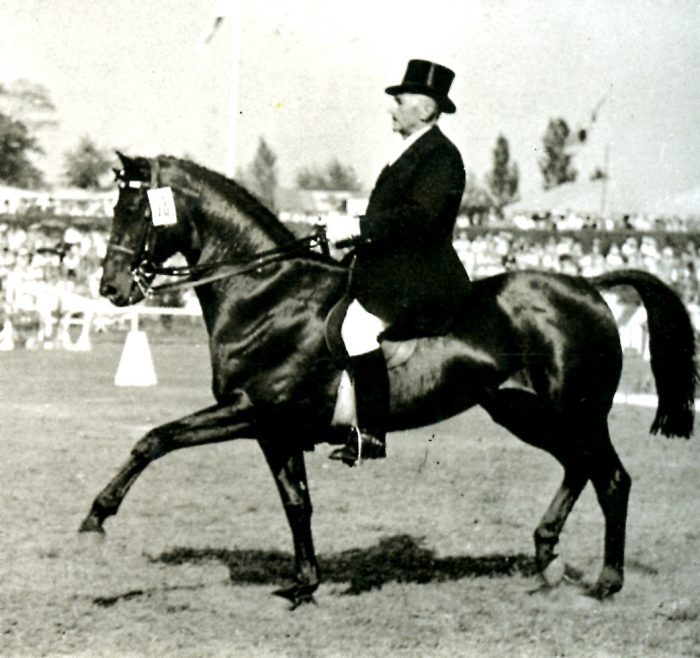
Riding the great, Chronist
Twice again the great instructor shone at the Olympic Games to demonstrate the classic art of equitation: in Helsinki 1952 and Stockholm 1956. Here is what Gustav Rau wrote after Helsinki in the St-Georg Almanac: ‘Our method of riding was well represented. The three horses were really supple, they definitely were in that high collection which is indispensible to do the difficult figures of the Grand Prix de Dressage correctly and cleanly. Impulsion in the extended paces could not have been better. Adular was brilliant and, even in the most difficult figures, did not hesitate to obey his rider’s aids. Herr O. Lörke had got horses and riders ready to give an admirable demonstration before so many critics.’
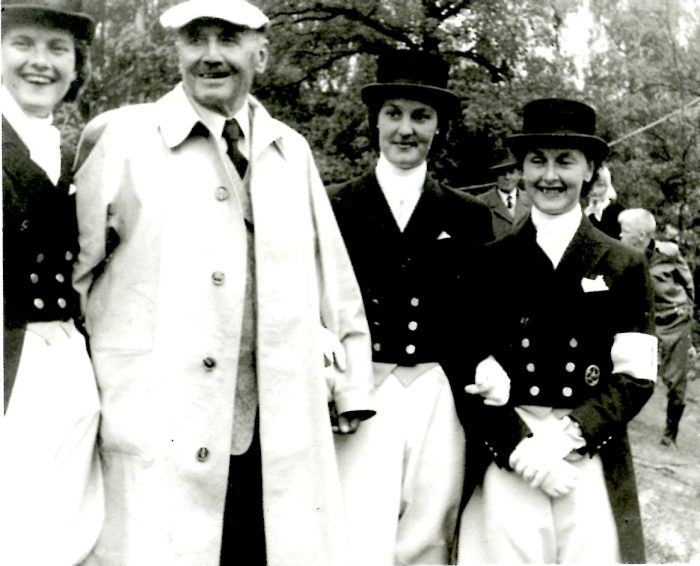
Lörke with his team at the 1956 Games – Liselott Linsenhoff, Anneliese Küppers and Hannalor Weygand
Thank you Richard Abé
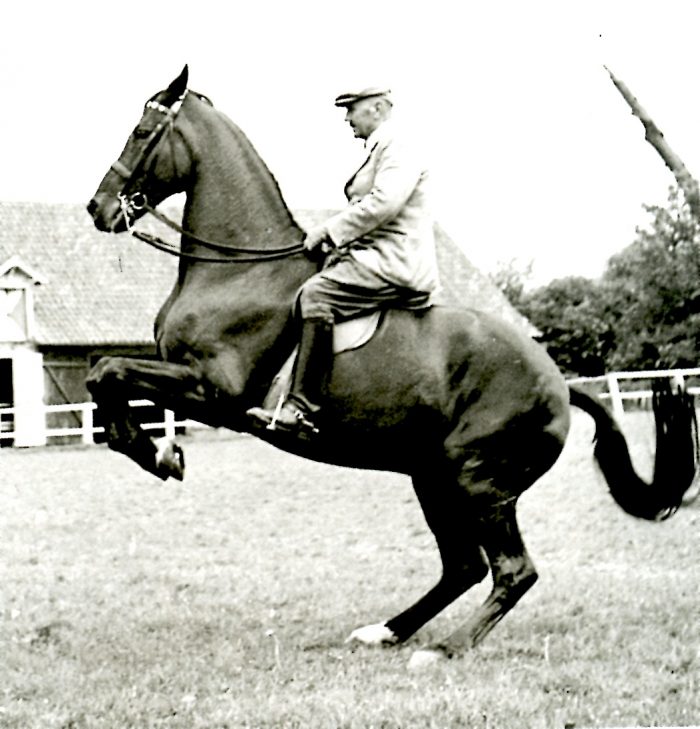
Lörke and Fanal
The line of Lörke’s influence extends. Another Lörke pupil was Bubi Günther (1921 – 1974) who in turn trained Herbert Rehbein (1946 – 1997) who trained scores of German and International students during his time at Grönwoldhof. Another Lörke student was Herbert Kuckluck trainer of, amongst many others, Ann-Kathrin Linsenhoff. Kuckluck trained Siegfried ‘Bimbo’ Peilicke (1932 – 2012), who from his base in Warendorf trained riders all around the world. Then the last of our trio of Lörke students, Willi Schultheis (1922 – 1995), another hugely influential figure, and trainer of Rudolf Zeilinger, formerly the Danish team coach, then coaching Spain.
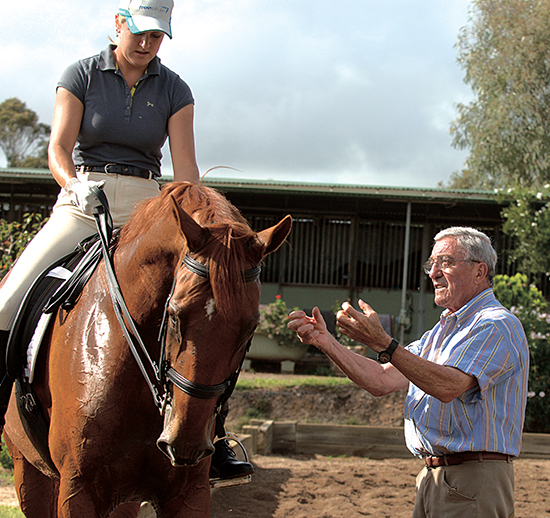
Bimbo Peilicke – another to spread the word…
Lörke was rumoured to carry a small pen knife in his pocket and when-ever he saw draw reins cut them into small pieces. Although he never wrote a book, he told his pupils to ‘look at me and try to discover the art yourself.’


